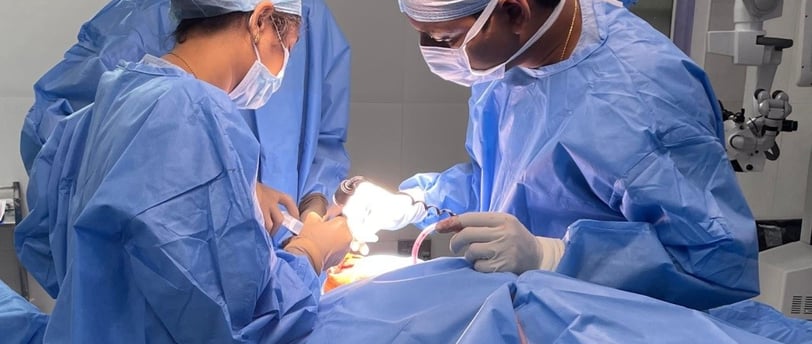Is Orthognathic Surgery a Permanent Solution?
11/13/20232 min read


Introduction
Orthognathic surgery, also known as corrective jaw surgery, is a procedure performed to correct irregularities or misalignments of the jaw and teeth. It is a significant surgical intervention that aims to improve both the functional and aesthetic aspects of the face. One common question that arises regarding orthognathic surgery is whether it provides a permanent solution. In this article, we will explore the long-term effects of orthognathic surgery and its potential for lasting results.
The Purpose of Orthognathic Surgery
Orthognathic surgery is typically recommended for individuals with severe jaw misalignment, which can cause difficulties in chewing, speaking, and breathing. It can also address aesthetic concerns related to facial symmetry and balance. The procedure involves repositioning the jawbones and, in some cases, realigning the teeth to achieve optimal function and appearance.
Long-Term Results
Orthognathic surgery is considered to be a permanent solution for correcting jaw and teeth misalignment. Once the jaw position and teeth position are placed in the desired place and direction, they are expected to remain stable over time. The success of the surgery largely depends on the skill and expertise of the surgeon, as well as the patient's commitment to post-operative care and maintenance.
While the possibility of relapse exists, it is relatively low if the surgery is performed correctly and the jaw is placed in an ideal position. The stability of the results can vary depending on individual factors such as bone healing, soft tissue adaptation, and the patient's overall oral health. In most cases, however, orthognathic surgery provides long-lasting improvements in both function and aesthetics.
Post-Operative Care
To ensure the best possible long-term results, patients are advised to follow their surgeon's post-operative care instructions diligently. This may include maintaining a proper oral hygiene routine, wearing prescribed orthodontic appliances, and attending regular follow-up appointments. By taking these measures, patients can minimize the risk of complications and maintain the stability of their jaw and teeth alignment.
Conclusion
Orthognathic surgery is a permanent solution for correcting severe jaw and teeth misalignment. While there is a small possibility of relapse, the long-term stability of the results is generally high if the surgery is performed correctly and post-operative care is followed diligently. If you are considering orthognathic surgery, it is essential to consult with a qualified oral and maxillofacial surgeon who can assess your specific needs and provide personalized advice.
